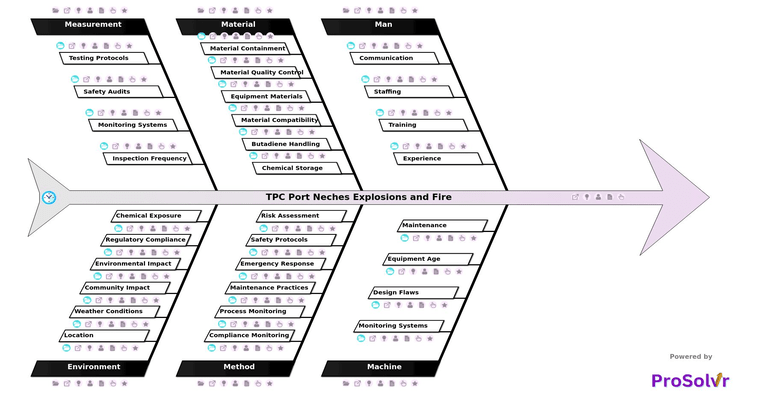Root Cause Analysis of Catastrophic Explosion and Fire at TPC Group Port Neches Operations
The TPC explosion in Port Neches, Texas, occurred in November 2019, leading to extensive damage, injuries, and environmental impact. To prevent similar incidents in the future, a Root Cause Analysis (RCA) was conducted. RCA is a systematic process used to identify the fundamental causes of an event or problem.
The RCA revealed several critical issues contributing to the explosion. One key finding was the failure to address ongoing issues with popcorn polymer formation in the facility's processing unit. This formation can lead to equipment rupture, which was a significant factor in this incident. This emphasizes the importance of proactive monitoring and maintenance to prevent such issues.
Inadequate containment measures for storing and handling flammable butadiene were identified as a contributing factor. The release of 6,000 gallons of butadiene formed a vapor cloud that ignited and exploded, causing the initial blast and subsequent fires. Proper containment and monitoring systems could have detected the leak early and prevented the situation from escalating.
In response to the findings from the RCA, Corrective and Preventive Actions (CAPA) were recommended to address the identified root causes and improve safety measures. CAPA involves implementing corrective actions to fix immediate issues and preventive actions to prevent recurrence. This approach aligns with Six Sigma methodologies, focusing on continuous improvement and reducing variability in processes.
Moving forward, it is essential for petrochemical facilities to prioritize safety, invest in preventive maintenance, and foster a culture of accountability to safeguard workers, communities, and the environment. The lessons learned from this tragic incident should serve as a catalyst for industry-wide improvements, ensuring that such disasters are prevented to protect lives and preserve the environment.
The TPC Port Neches Explosions and Fire incident highlights the pressing need for rigorous root cause analysis and robust corrective actions to prevent such catastrophic events. Through comprehensive investigation and the adoption of the suggested improvements, the facility can bolster safety protocols, safeguard the community, and minimize the chances of recurrence. This fishbone analysis offers a structured approach for TPC to fortify its operational integrity, rebuild trust with the community, and uphold environmental stewardship. Implementing these insights will pave the way for safer operations, enhanced regulatory compliance, and a resilient response to future challenges.
Who should use the TPC Port Neches Explosions and Fire template?
This template for a detailed Root Cause Analysis (RCA) report on the Moss Landing Power Plant oil spill is designed for various stakeholders involved in the incident and its aftermath. Here's a list of potential users who could benefit from using this template:
- Industrial facility managers
- Environmental safety officers
- Regulatory compliance teams
- Risk management professionals
- Emergency response coordinators
- To identify root causes of the incident
- To implement corrective and preventive actions (CAPA)
- To enhance operational safety measures
- To ensure compliance with environmental regulations
- To mitigate risks and prevent future incidents
- https://www.csb.gov/tpc-port-neches-explosions-and-fire
- https://www.treehugger.com/tpc-explosion-port-neches-5114463








